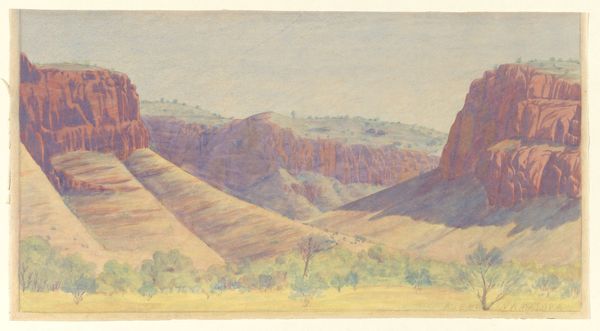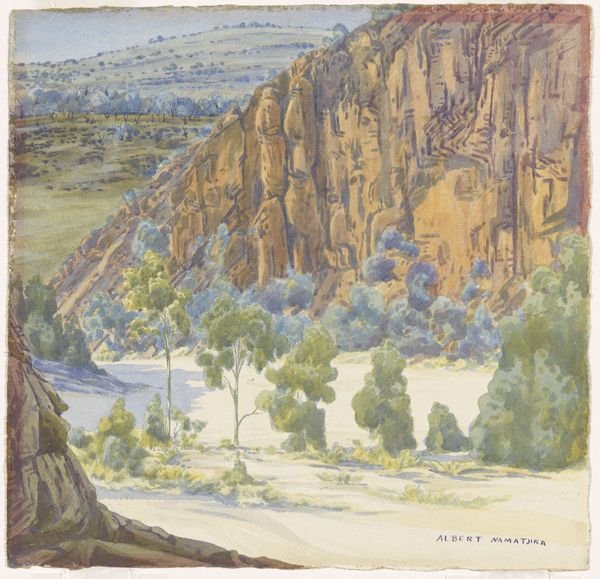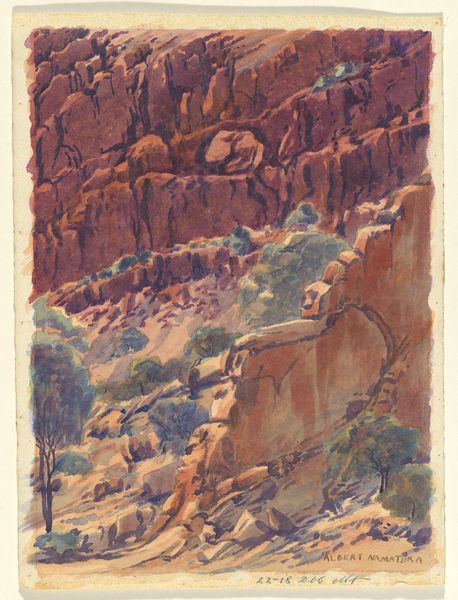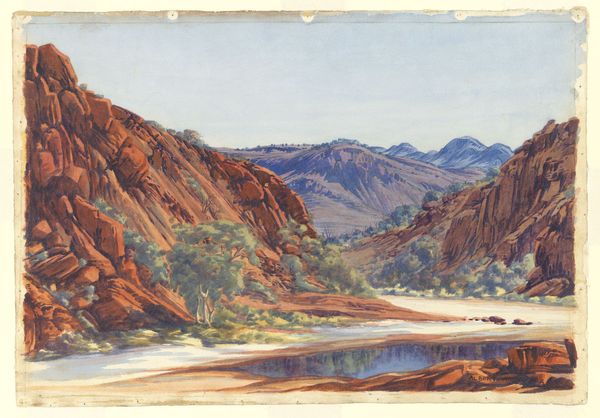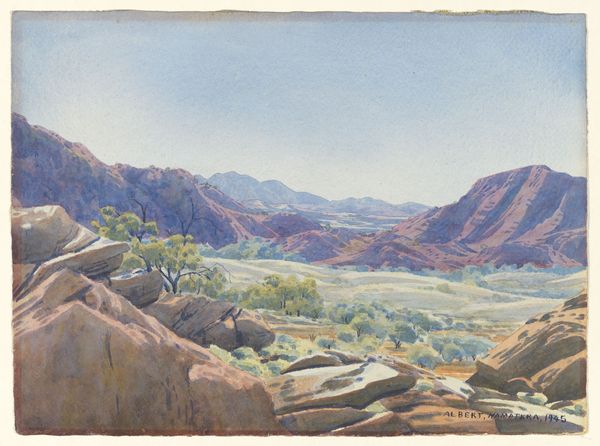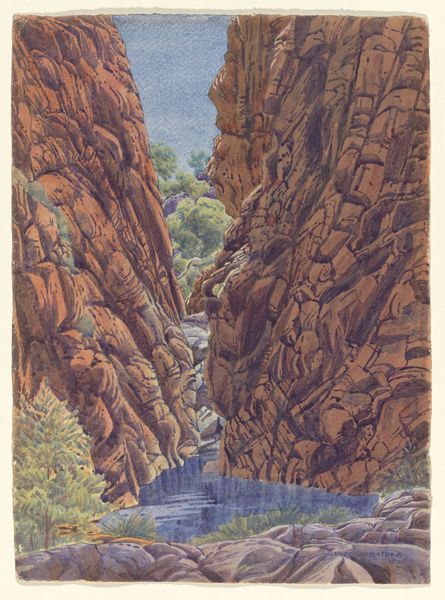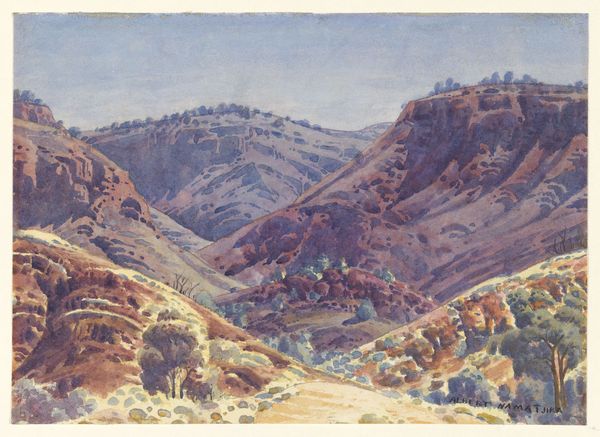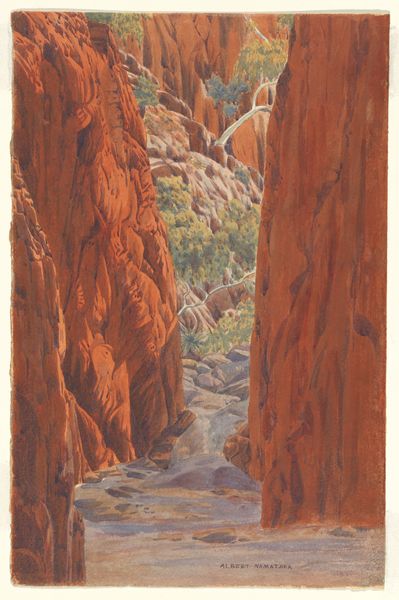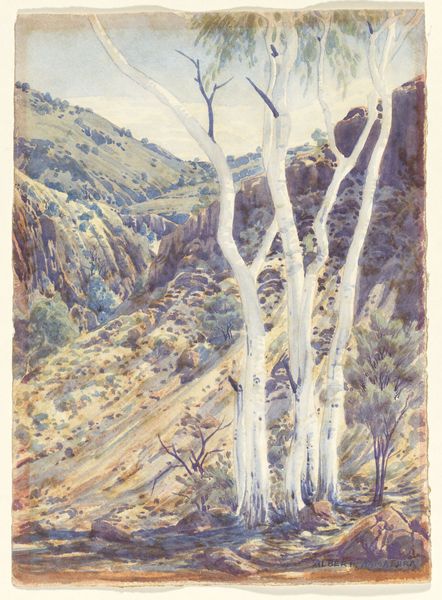
watercolor
#
landscape
#
watercolor
#
watercolour illustration
#
realism
Copyright: Albert Namatjira,Fair Use
Editor: So, here we have Albert Namatjira's watercolour, "The Gorge (Simpsons Gap)," created in 1945. It has a really striking composition, guiding the eye right through this narrow passage. What strikes you most when you look at it? Curator: What I see is more than just a landscape; it's a visual encoding of cultural memory. The gorge itself, Simpsons Gap, holds deep significance for the Arrernte people, the traditional owners. The watercolour, then, isn't just a representation, but a kind of portrait imbued with generations of stories, knowledge, and spiritual connection to that land. Look at the colours, the ochres and browns, echoing the very earth itself, almost pulsating with life. Does that resonance strike you at all? Editor: I see that now, it's more than just a pretty scene! Knowing the gorge is a significant site adds another layer. Do you think the style Namatjira uses—that realism—also contributes to how that cultural memory is preserved or understood? Curator: Absolutely. Namatjira bridged two worlds. His Western style of painting, using watercolour techniques he learned, served as a way to present his ancestral land to a wider audience, allowing a sense of place to exist in a format palatable to those unfamiliar with the Aboriginal connection to the land. In doing so, he essentially documented a spiritual homeland, embedding that deep cultural understanding within each brushstroke for generations to appreciate. Notice the way the rocks seem almost sentient? Editor: Yes, they do! I didn't notice that before, now I really see what you mean about the painting acting as a 'portrait' of the place. Curator: Precisely! Visual art, such as this, has often been used to both reveal and conceal, carrying secrets of cultural values. How different is your understanding now, having thought about the painting as symbolic encoding of cultural memory? Editor: Immensely! I appreciate how looking at a landscape this way gives it so much more depth and significance than just scenery. Thank you! Curator: My pleasure. Remember, these painted surfaces can reveal histories that the present tries to erase, holding echoes of the past in every stroke.
Comments
No comments
Be the first to comment and join the conversation on the ultimate creative platform.

